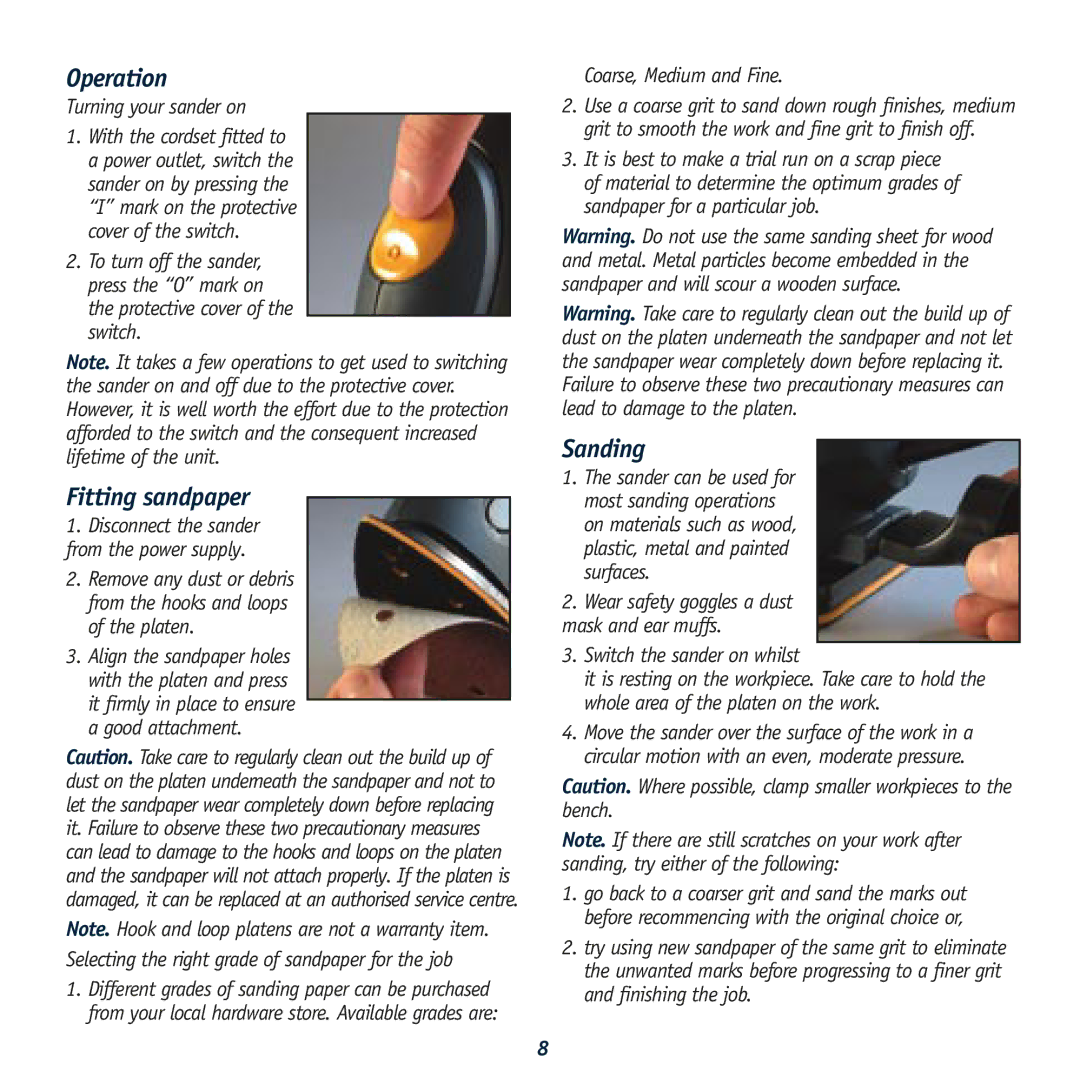
Operation
Turning your sander on
1.With the cordset fitted to a power outlet, switch the sander on by pressing the “I” mark on the protective cover of the switch.
2.To turn off the sander, press the “O” mark on the protective cover of the switch.
Note. It takes a few operations to get used to switching the sander on and off due to the protective cover. However, it is well worth the effort due to the protection afforded to the switch and the consequent increased lifetime of the unit.
Fitting sandpaper
1.Disconnect the sander from the power supply.
2.Remove any dust or debris from the hooks and loops of the platen.
3.Align the sandpaper holes with the platen and press it firmly in place to ensure a good attachment.
Caution. Take care to regularly clean out the build up of dust on the platen underneath the sandpaper and not to let the sandpaper wear completely down before replacing it. Failure to observe these two precautionary measures can lead to damage to the hooks and loops on the platen and the sandpaper will not attach properly. If the platen is damaged, it can be replaced at an authorised service centre.
Note. Hook and loop platens are not a warranty item. Selecting the right grade of sandpaper for the job
1.Different grades of sanding paper can be purchased from your local hardware store. Available grades are:
Coarse, Medium and Fine.
2.Use a coarse grit to sand down rough finishes, medium grit to smooth the work and fine grit to finish off.
3.It is best to make a trial run on a scrap piece of material to determine the optimum grades of sandpaper for a particular job.
Warning. Do not use the same sanding sheet for wood and metal. Metal particles become embedded in the sandpaper and will scour a wooden surface.
Warning. Take care to regularly clean out the build up of dust on the platen underneath the sandpaper and not let the sandpaper wear completely down before replacing it. Failure to observe these two precautionary measures can lead to damage to the platen.
Sanding
1.The sander can be used for most sanding operations on materials such as wood, plastic, metal and painted surfaces.
2.Wear safety goggles a dust mask and ear muffs.
3.Switch the sander on whilst
it is resting on the workpiece. Take care to hold the whole area of the platen on the work.
4.Move the sander over the surface of the work in a circular motion with an even, moderate pressure.
Caution. Where possible, clamp smaller workpieces to the bench.
Note. If there are still scratches on your work after sanding, try either of the following:
1.go back to a coarser grit and sand the marks out before recommencing with the original choice or,
2.try using new sandpaper of the same grit to eliminate the unwanted marks before progressing to a finer grit and finishing the job.
8
